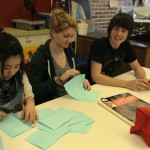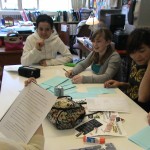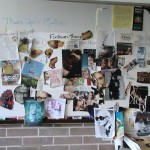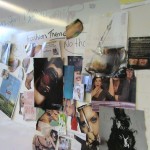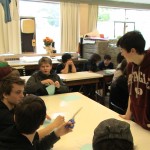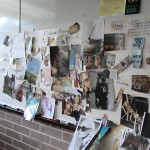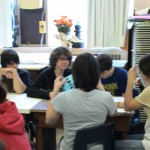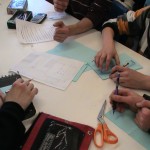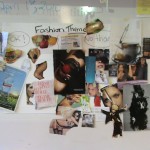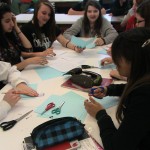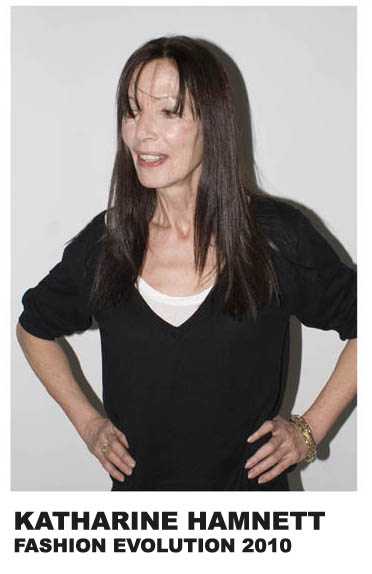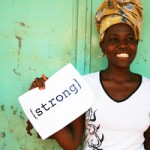Over the past few weeks, I’ve had the pleasure of sitting down with Tamara Albu, Director of the A.A.S. Fashion Design Program at Parsons School of Fashion in New York to discuss Social Alterations, and the work we’ve been doing in developing free, open-source curricula for students and educators.
Tamara asked me to sit down with her more formally and explain the project so that students and faculty at Parsons might get to know who we are and the work that we are doing.
Speaking with Tamara in this virtual space was a complete honour, and I am so happy to share this edited video with you here, along with the interview transcript.
Parsons School of Fashion talks Responsible Fashion with Mary Hanlon from Social Alterations on Vimeo.
Interview Transcript
Tamara Albu (TA): Hello. My name is Tamara Albu, I direct the Fashion Design A.A.S. Program, at Parsons School of Fashion here in New York. We are here today, in a virtual space, creating a bridge between New York and Vancouver, so we can talk a bit about the Social Alterations online lab developed by Mary Hanlon, after completing her Graduate thesis.
Mary Hanlon is the Founder, Editor and Lead Contributor of Social Alterations, and the winner of this year’s Fashioning the Future Award for “Systems for a Sustainable Fashion Industry” through the Centre for Sustainable Fashion at London College of Fashion.
Before beginning our conversation, I would like to thank David Goldsmith, one of our senior faculty, for introducing me to Mary.
It was fortunate that Mary Hanlon and David Goldsmith met recently at the Fashioning an Ethical Industry conference, in London. At the end of the event he talked about his strong belief that Mary’s website team and his research are a wonderful example of building the infrastructure for a “Fully-Fair” clothing and fashion industry. As he explained, Fully-Fair means being fair–not only in the limited sense of fair-trade,–but fair environmentally, economically, culturally, and socially.
Soon after this, I visited your website to learn more about your online lab, Mary. I was so taken by this project that I started thinking how can I make your ideas known to our students and faculty, here at Parsons, as quickly and efficiently as possible.
What came to my mind, was we already had a lot of conversations online via Skype, so
I simply wanted to record our Skype discussions as quickly as possible and have them published on the Parsons’ School of Fashion blogazine.
So, Mary, before we begin our main discussion—I would like you to perhaps say a few words about yourself.
Mary Hanlon (MH): Hi Tamara! Thank you for speaking with me. It’s wonderful to talk with you here. Yes, I’d like to thank David Goldsmith for introducing us, first and foremost. I met David in early March, back at the Fashioning an Ethical Industry Conference in London. We got to talking there, and, you know, we were speaking the same language. So, I just want to thank him for putting us in contact, and also thank you, both of you, for taking an interest in Social Alterations.
“It’s not enough to create great fashion, you have to understand why, what’s going to happen to that fashion later on, and what are the implications of what you’ve done” (Simon Collins, Dean of Parsons School of Fashion)
TA: I’m certainly very interested in Social Alterations, and that’s why we are here today. So, let me begin by asking you my first question: What exactly is Social Alterations?
MH: Social Alterations (SA) is an online lab built to educate fashion design instructors and students on the social, cultural, environmental and economic impact of their design choices.
It is an interactive website that, you know, hopes to create a space that will begin the conversation to bridge the gap between responsible design in theory and then responsible design in practice. So it’s a learning space, essentially, that wants to facilitate transformative design education.
I founded Social Alterations because my graduate research investigated the role of fashion design educators in teaching responsible fashion design. And, what I learned from that…you know, my research really showed that there was a knowledge gap within the industry, and I realized that there was an opportunity there to take the research I had done and put it outside of just the walls of my academia.
My passion for open-source learning guided me toward wanting to create an educational system that would be accessible to as many people as possible.
The Social Alterations Team is made up of myself, Nadira Lamrad, who is both a collaborator on this project as well as a contributing writer, and Katrine Karlsen, who is a contributor. It’s an international initiative. You know, while Nadira is based in Hong Kong, Katrine is writing from Norway, and I’m currently based in Vancouver, Canada.
TA: My goodness, this is a wonderful thing, they certainly are from all over the world; very interesting and exciting. Mary, let me ask you one other question, what do you mean by ‘transformative design education’ if you could develop a little bit more about that?
MH: Sure. I mean, we believe that interdisciplinary education is key to tackling these issues, because these are interdisciplinary issues. So our theme ‘Accessibility for Accountability,’ really shows that we want to help learners understand these issues by breaking down educational barriers: we want to provide them with the necessary tools to take on the challenge of responsible design, give them proper resources, create platforms for discussion, and build open-source curricula, within the interdisciplinary context. So when we talk about “responsible design,” we are talking about design that is educated on all of these issues.
TA: So, that leads me to a subject that is very close to me, but I’d like you to talk about it in relation to your project. Could you elaborate on what you mean by ‘open-source’ learning?
Mary: Sure. So, open-source learning for us is really about breaking down educational barriers. There is so much amazing research being done, that if we can harness this knowledge and aggregate the resources to deliver this through open-source systems. I mean, It’s exciting for us to imagine educators from across the globe coming together to discuss these issues. For example the open-source nature of Social Alterations allows educators and thought leaders from various disciplines (not just fashion design) to share their research in best practices for responsible design, but they can do so in real-time, online. You know, so it doesn’t matter if you’re in Hong Kong, or if you’re in Toronto, if you’re in Vancouver, or if you’re in South America, it’s not the point. Location isn’t the matter, it’s a matter of getting access to the information that you need as quickly as possible, because the consequences of not having that information are very large.
TA: You’re absolutely right, Mary. Can you tell us, what do you mean by ‘responsible design’?
MH: When we talk about “responsible design” on Social Alterations, we are talking about design that has considered, again, so environment, culture, society and economy to the absolute best of its abilities, at each stage of the design process.
Research has shown that so much of the consequences of design (you know, positive or negative) is actually known at the design stage. So while consumer education plays a huge role, of course, in shaping socially responsible fashion design, signals of deception, greenwashing for example, and unintelligent design, hidden ingredients….consumers basically are left to um, in many cases (of course not all cases), but in many cases, are left with no real choice—to pick from the best of the worst
But we believe the designer always has a choice at that design stage.
Material selection, for example is an obvious starting point. We have a “Fibre Analysis” that outlines the potential social and environmental consequences of commonly used fibres (that’s available online). And it’s this resource that we developed by aggregating resources that already exist, by pulling them together in one package so people have the answers they need right away.
Of course, the list of fibres in the analysis is no where near exhaustive, and so we’ll be working on further developing the content as we move forward. It’s an ongoing process.
TA: I’m so glad you mentioned all these, and I certainly hope that your project is going to continue and flourish and become, not only a source of inspiration but actually a source of information for so many designers interested in responsible design. Let’s go a little bit farther, and talk a little bit about the fact that you have argued that design educators have a responsibility to teach these issues. Could you explain?
MH: At the end of the day, the responsibility falls on the shoulder of the designer, primarily, because the designer is the creator of that product—of that garment
But if we go back and we think about the fashion design educator as having a responsibility—if we think of fashion design education as the point of intervention then the responsibility is lifted slightly off the shoulders of the designer and placed on the shoulders of the fashion/textile/apparel design educator.
So, to teach design practices that are culturally, socially, environmentally and economically supportive— that’s the responsibility of the design educator, is essentially what we’re arguing.
TA: Very well put. Okay, that leads me to my next question: what’s next?
Mary: Well, we’ll be looking to partner with various international stakeholders within the community (corporations, non-governmental organizations, environmental and Human Rights groups, social enterprises and educational institutions), and we’ll continue the process of developing the curricula, and pulling the resources together, and trying to deliver them in an edited capacity that makes sense—that people can use and absorb the knowledge that we’re presenting. I mean, it’s a really exciting time, because we have had such positive feedback coming from all sectors. There is a real opportunity for change here. I think that that’s pretty clear, so if we do the work, and we aggregate the resources, develop this content, and really pull it together for people so that they understand not just what’s at stake, but the choice that they can make moving forward to have control—take back control—is really powerful.
TA: Mary, I’d like to thank you very much for sharing this with all of us. I will certainly make sure that this information will be available online. Either our faculty and students will watch this video or they might prefer to read through the transcript, but the end result should be that we raise awareness for this project, and hopefully your website will be visited more and more, and that of course will mean that your project will become even more successful than it is now.
MH: Thank you so much for taking the time to talk to me about this project. I hope that your readers will find it interesting, and that they’ll come and support us. And I really look forward to continuing this conversation. Thank you again, very much for your time. Thank you. Thank you very much Tamara!
TA: Thank you so much for allowing me to enter your space and interview you, I just want to add that I have been talking today with Mary Hanlon who is the Founder, Editor and Lead Contributor of Social Alterations, and the winner of this year’s Fashioning the Future Award for “Systems for a Sustainable Fashion Industry” through the Centre for Sustainable Fashion at London College of Fashion.
I hope that you’re going to get a lot of followers—and I’m certainly already one of them! So, great talking to you!
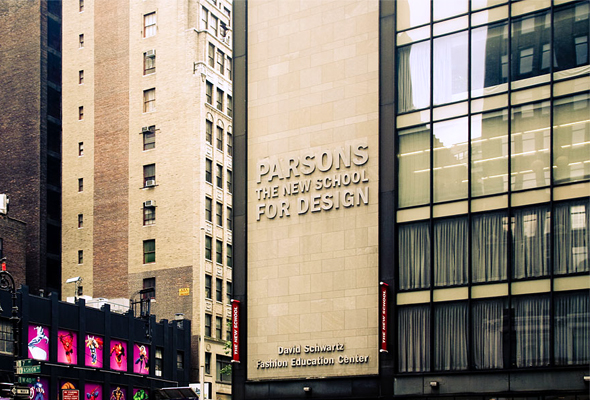


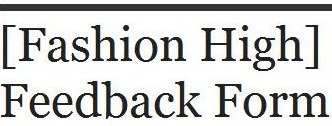
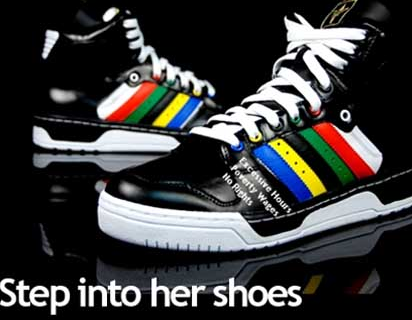
![[Fashion High]](http://socialalterations.com/wp-content/uploads/2010/04/Talking-Back-059.jpg)
![[Fashion High]](http://socialalterations.com/wp-content/uploads/2010/04/Talking-Back-066.jpg)
